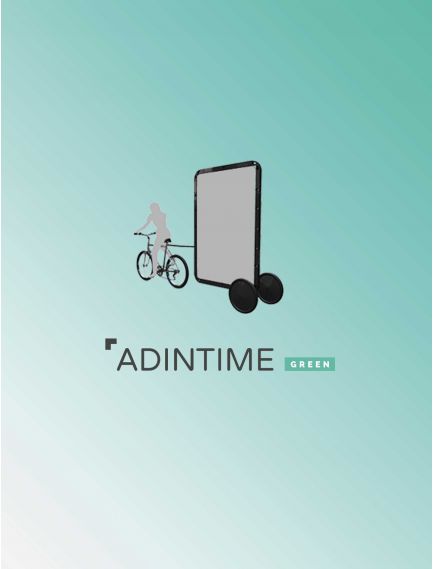In the advertising world, a variety of formats and channels are available. But how do you navigate through them? First and foremost, understanding the goals of your campaigns is crucial. What is your communication objective? Are you aiming to boost sales? Increase brand awareness? Enhance visibility? To help you, we’ve outlined the different types of media and non-media communication channels and their key differences.
Summary: media and non-media communication – What are the differences?
- Media Communication Channels
- Non-Media Communication Channels
- What Are the Differences Between Media and Non-Media Communication?
- Summary Table of Differences Between Media and Non-Media Communication

Media communication involves using traditional advertising channels to deliver promotional messages to wide or targeted audiences. Here are the primary media channels:
Press
The press (both print and digital) is a powerful medium for reaching specific audiences with targeted themes.
Radio
Radio, the second most popular medium in France, offers many advantages. It can be listened to anywhere, all day long—even in the evening—and is accessible via tablets and smartphones. It’s a great way to build brand awareness.
Television
Television, the leading medium in France, reaches millions of viewers daily. It offers a vast range of channels, enabling advertisers to air their campaigns on thematic, regional, or national networks.
Cinema
Cinema advertising allows brands to increase awareness by showcasing their ads to audiences before movie screenings. This medium is ideal for promoting your business or flagship products.
Podcasts
Podcasts are rapidly growing in popularity, offering hours of listening on diverse topics such as politics, education, music, and more. This medium is increasingly embraced by audiences.
OOH and DOOH Advertising
Out-of-home (OOH) advertising, such as billboards, is one of the most widely used communication methods in France, offering various formats and locations to maximize visibility.
Digital-out-of-home (DOOH) advertising is typically found in transit hubs, shopping centers, and airports. With dynamic visuals, it appeals to a broad audience.
By using these channels, businesses can reach large audiences, build 360-degree strategies, target specific demographics (e.g., age, gender, social status), and boost visibility and brand recognition. Media ads, such as those in the press, are often appreciated by readers for their informative value.

Non-media communication refers to direct interaction with customers through channels like press relations, point-of-sale advertising (POS), corporate events, websites, social media, and promotional items. These techniques foster customer loyalty, increase sales, and enhance brand recognition in real time. However, their main limitation is that the impact is often temporary.
Sponsorship
- Sports or cultural events: Funding or supporting events to associate the brand with positive or popular activities.
- Patronage: Supporting cultural, artistic, or charitable initiatives to enhance the brand's image.
Street Marketing
- Flyers and brochures: Distributed in busy areas or public spaces to grab attention.
- Street events: Public performances or activities designed to captivate passersby.
- Flash mobs and pop-up installations: Creative, memorable actions in strategic locations.
Event Marketing
- Trade fairs and exhibitions: Using stands at industry events to promote products or services.
- Product launches: Events organized to introduce new products to the market.
- Conferences and seminars: Educational events that establish expertise in a field.
Public Relations
- Press releases: Sharing important information or announcements with journalists or media outlets.
- Press conferences: Organizing events to address media questions on relevant topics.
- Crisis management: Protecting or restoring a company’s image during challenges.
What are the differences between media and non-media communication?
Media communication relies on traditional advertising tools to deliver promotional messages at scale, reaching varied and/or targeted audiences.
The main differences between media and non-media communication are:
- Cost: Media ads are typically more expensive than non-media techniques (e.g., billboards are usually costlier than POS advertising).
- Creativity: Media allows for enriched ads with sound and visuals, while non-media often does not.
- Geographic reach: Media campaigns are not limited by geography, whereas non-media communication often is.
Despite these differences, combining media and non-media campaigns can enhance visibility. If this approach fits your goals, don’t hesitate to use it!
>>> Discover the different channels you can use to communicate
Summary table of differences between media and non-media communication
| Criteria | Media Communication | Non-Media Communication |
|---|
| Objective | Reach a large audience and boost awareness | Build a direct and personalized connection with customers |
| Channels | Press, radio, TV, OOH, DOOH, cinema, podcasts | POS, social media, events, street marketing, promotional items |
| Cost | Typically high due to scale and sophisticated tools | Often more affordable, adaptable to budget |
| Creativity | Enhanced by sound, visuals, and video | Focused on physical and interactive experiences |
| Geographic Reach | National or international reach | Local or event-specific reach |
| Measurability | Precise measurements using audience data and analytics | More qualitative feedback (e.g., participant responses, immediate sales) |
| Impact Duration | Long-term impact (awareness and retention) | Often momentary or event-related impact |






 Top 30 best ads musics
Top 30 best ads musics
 The influence of advertising on purchasing behavior
The influence of advertising on purchasing behavior
 Top of the most listened podcasts in France
Top of the most listened podcasts in France
 Top 30 best ads 2021 in France
Top 30 best ads 2021 in France
 This Year Marketing Calendar
This Year Marketing Calendar
 Facebook Ads Library: The ultimate guide to winning campaigns
Facebook Ads Library: The ultimate guide to winning campaigns
 How to prepare your advertising campaigns for Christmas?
How to prepare your advertising campaigns for Christmas?
 The top 20 ad films of the year
The top 20 ad films of the year
 Example of a unique selling proposition
Example of a unique selling proposition
 Advertising storyboard: how to structure your campaigns
Advertising storyboard: how to structure your campaigns









